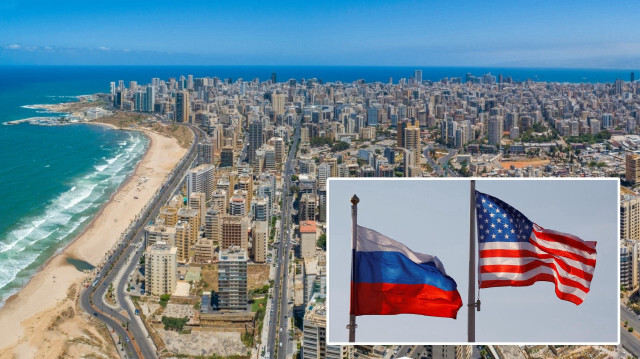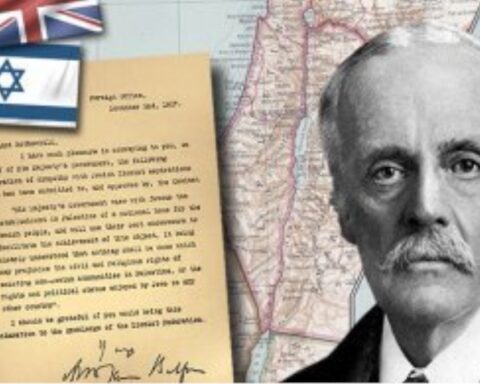Over 40 years ago, another American envoy arrived in Beirut—Philip Habib—assuming a role strikingly similar to the one Tom Barrack is now taking on. Removing a threat to Israel from Lebanese territory, Habib’s mission in the early 1980s set in motion a chain of events few in the region—or beyond—would have wished to witness. Some fear that today’s ambassador Tom Barrack’s involvement in Lebanon may mark the beginning of yet another unpredictable sequence, one that could reshape regional dynamics in ways we cannot yet foresee.
Habib’s arrival came as the US scrambled to contain the mess caused by Israel’s 1982 invasion of Lebanon—one of the bloodiest chapters of the Lebanese civil war that lasted from 1975 to 1990. Ambassador Philip Habib’s task was to broker the removal of the Palestinian fighters from Lebanon so Israel could declare its military objectives of invasion that was named Operation “Peace for Galilee” accomplished. But the aftermath spiraled: U.S. and French peace forces in Lebanon were targeted in devastating attacks that killed over 250 US marines and dozens of French troops—an event etched into Washington DC’s memory to this day. Though the PLO leadership was eventually evacuated along with the fighters to Tunisia, Lebanon’s war deepened, drawing in new actors and agendas.
Fast forward to 2025, Ambassador Tom Barrack arrives in Beirut amid a volatile Middle East standoff, tasked with closing the Hezbollah file—persuading the Lebanese state to approve a decision to disarm the group and making it happen on the ground. A mission that is both formidable and extremely dangerous to even initiate. “I do not want to hand over my arms. Giving away Hezbollah’s weapons is suicide—we are not willing to commit suicide,” said Mohammad Ra’ad, the leader of Hezbollah’s bloc in the Lebanese Parliament during a TV interview with Al Manar. The situation is extremely tense, The Syrian lifeline to Hezbollah has been severed by the collapse of Bashar al-Assad’s Ba’ath regime in Damascus. Hezbollah itself has suffered unprecedented losses since the war in Gaza began, losing much of its leadership one way or another.
In the early months of the Israel–Gaza war, Hezbollah faced mounting criticism from regional allies and traditional supporters for its initial restraint. Many expected them to open the northern front against Israel in solidarity with Gaza. When Hezbollah finally responded, the conflict’s shape shifted dramatically leaving the region stunned, whether in sorrow or anticipation.
By 2024, confrontations between Hezbollah and Israel intensified. Escalations spread: Houthis launched drones and missiles at Israel, while Iraqi factions targeted both Israeli and American positions, including bases like Ain al-Assad in Jordan. Iran itself got involved for the first time in open confrontation with Israel and even American bases in the Gulf. The situation was on the verge of spinning out of control.
Then came the shock of 17th and 18th September: Mossad’s pager attacks on Hezbollah stunned Lebanon and the entire Middle East. Only ten days later, Israel succeeded in assassinating the leader of Hezbollah, Hassan Nasrallah in a massive strike on a building in Beirut’s southern suburb—confirming his death and sending tremors through Lebanon and beyond.
Ambassador Tom Barrack’s current mission represents the final stage of this chain of events: persuading the Lebanese government and political class to accept that Hezbollah and the Palestinian refugee camps must be disarmed, allowing the Lebanese state—represented by its national army—to hold exclusive authority over weapons and armed force within the country. This has already been approved by the Lebanese government, and some troops have even been deployed at select points in South Lebanon. But the major red line and the serious challenge remains the future of Hezbollah’s military power and its heavy weapons arsenal. Dismantling it may lead to violent confrontation within Lebanon.
“No, there won’t be any confrontation, and no one is seeking or working toward confrontation in Lebanon. There must be an understanding among the Lebanese that the state is the only party entitled to sovereign and strategic responsibilities, and I believe Hezbollah itself has an interest in this matter,” said Lebanese parliament member and former minister Wael Abou Faour in a short phone interview.
Unlike Philip Habib, Tom Barrack is not a diplomat—he is a real estate businessman and a loyal friend to President Donald Trump. His family roots trace back to Lebanon, just as Philip Habib’s did—though their paths and roles in the region could not be more different. So, despite the fact that Habib’s mission was partially a hard-won success when measured against the challenges of its time, Barrack’s seems far more difficult and dangerous—especially as it risks destabilizing Lebanon’s fragile social and political peace.
“The shadow of civil war looms on the horizon, and there will be no life in Lebanon if the government attempts to confront or eliminate Hezbollah,” said Naim Qassim, Hezbollah’s Secretary General, in a televised speech. “It is an American-Israeli decision to eliminate the resistance, even if it leads to civil war and domestic conflict,” he added. Wael Abou Faour, the Lebanese parliament member and former minister from the Progressive Socialist Party, spoke to me about Qassim’s statement: “Certainly, no one wants a civil war and no one wants domestic conflict in Lebanon. Regardless of Tom Barrack’s mission, the Lebanese government feels the urgency of becoming a proper state. And to establish proper statehood, it must extend its authority over the entirety of the Lebanese territory,” Abou Faour told me in a phone conversation. “These are decisions made by the government of Lebanon, including the comments made for the ceasefire agreement of November 2024, approved and accepted by Hezbollah itself.”
As part of his war narrative and propaganda campaign accompanying his war on Gaza and beyond, Netanyahu vowed to redraw the map of the Middle East. The map is shifting indeed —alliances breaking, regimes collapsing, new powers pushing forward. And in the middle of this upheaval, Lebanon again finds itself on the fault line: a small country carrying a burden far greater than its size, and a stage where the region’s future will be decided.






